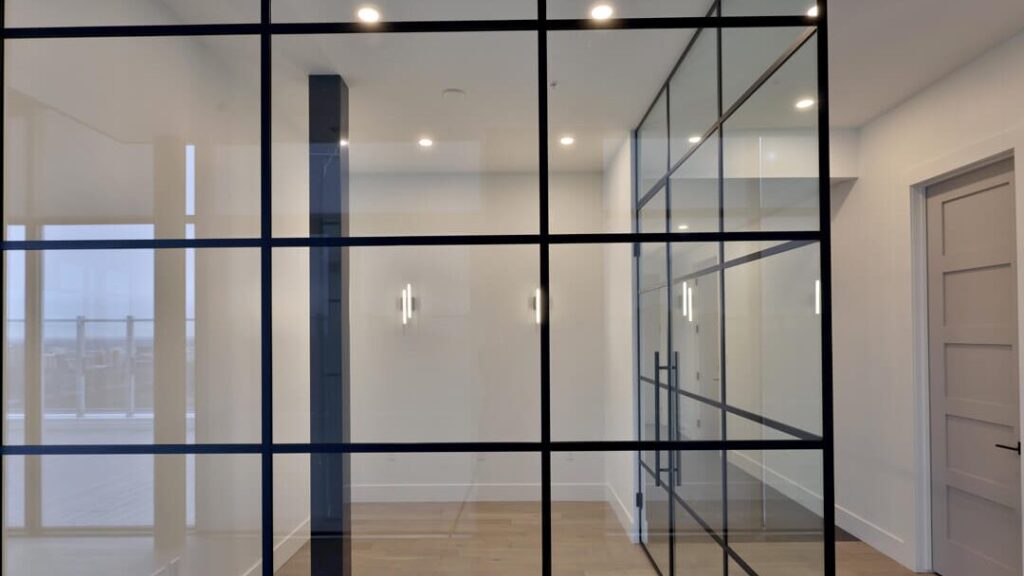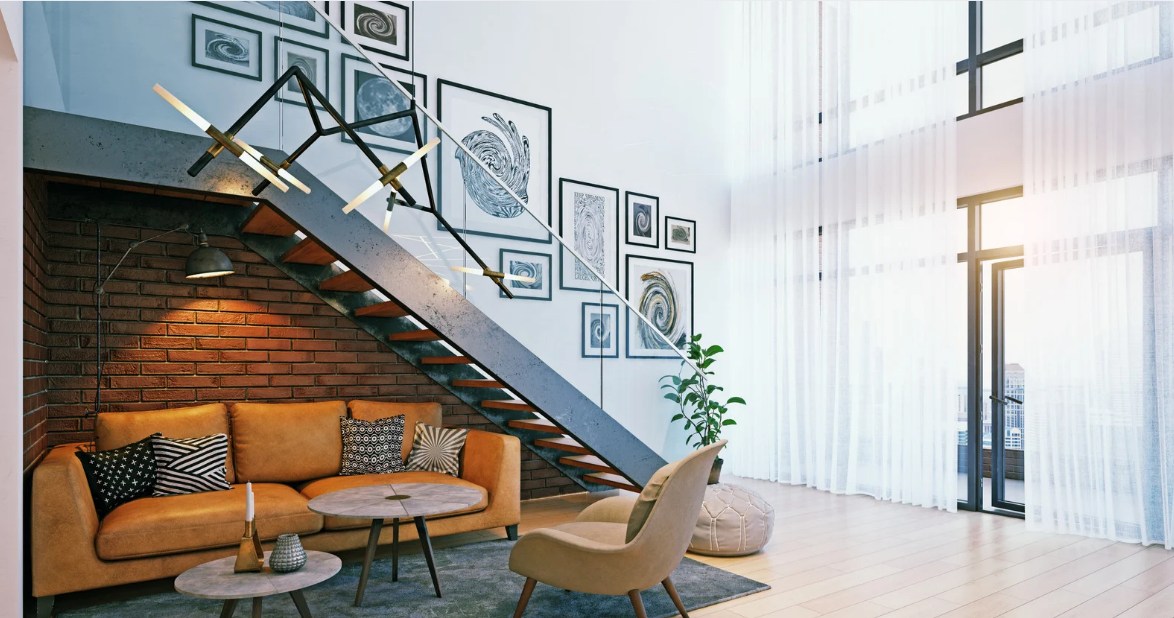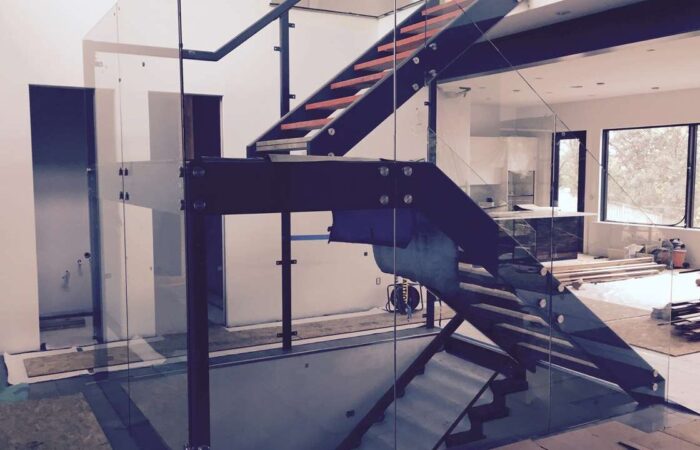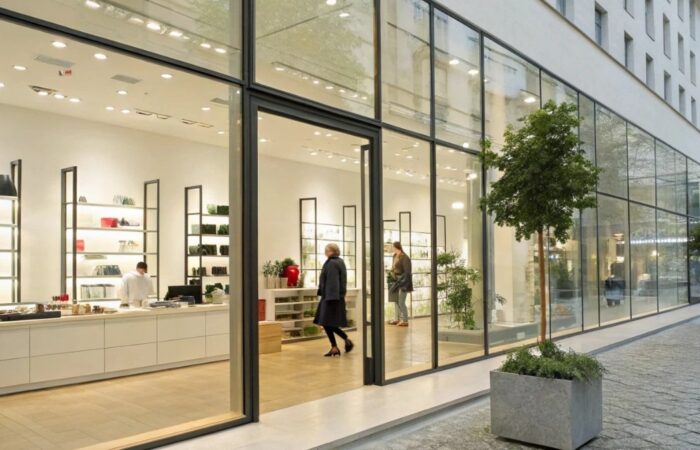
Modern home design has evolved dramatically over the past few decades, with homeowners increasingly seeking ways to create spaces that feel open, bright, and connected. One of the most transformative architectural elements gaining popularity across Canada is the integration of glass walls into residential spaces. These transparent barriers are revolutionizing how we think about interior design, natural light, and the flow of our living spaces.
Glass walls represent more than just a design trend—they’re a fundamental shift in how we approach modern living. From creating seamless transitions between indoor and outdoor spaces to maximizing natural light in Alberta’s sometimes challenging climate, glass walls offer a multitude of benefits that extend far beyond their aesthetic appeal. Understanding these advantages can help homeowners make informed decisions about incorporating this striking architectural element into their homes.
Transforming Natural Light and Space Perception
The most immediate and noticeable benefit of glass walls is their ability to dramatically increase natural light throughout a home. In Canadian climates, where winter months can be particularly dark and dreary, maximizing natural light becomes crucial for both mental well-being and energy efficiency. Glass walls act as conduits for sunlight, allowing it to penetrate deeper into interior spaces than traditional solid walls ever could.
This enhanced natural light distribution creates a ripple effect throughout the home. Rooms that were once dependent on artificial lighting during daylight hours suddenly become bright, welcoming spaces. The psychological benefits of increased natural light include:
- Improved mood and mental well-being – Natural light exposure helps combat seasonal affective patterns common in Canadian climates
- Enhanced productivity – Brighter spaces naturally encourage more active and focused daily routines
- Better sleep regulation – Natural light helps maintain healthy circadian rhythms
- Reduced eye strain – Natural illumination is gentler on the eyes than artificial lighting
For Canadian homeowners dealing with long winter months, glass walls can provide a significant quality-of-life improvement.
Beyond the health benefits, the visual impact of glass walls on space perception is remarkable. Solid walls create definitive boundaries that can make spaces feel compartmentalized and smaller than they are. Glass walls, by contrast, allow the eye to travel uninterrupted across multiple areas, creating an illusion of significantly expanded space. This visual continuity is particularly valuable in urban Canadian homes where square footage comes at a premium.
The interplay between natural light and space perception becomes even more pronounced when glass walls are strategically positioned to capture views of outdoor spaces. Whether it’s a carefully manicured garden, a snow-covered landscape, or urban architecture, these views become integrated into the interior design, effectively expanding the perceived boundaries of the living space beyond the physical structure of the home.
Creating Seamless Indoor-Outdoor Connections
Canadian homeowners are increasingly recognizing the value of creating strong connections between their indoor living spaces and outdoor environments. Glass walls facilitate this connection like no other architectural element can. During the warmer months, large glass wall systems can often be opened completely, essentially eliminating the boundary between interior and exterior spaces.
This seamless transition encourages a lifestyle that embraces outdoor living, even in climates where outdoor entertaining seasons may be shorter. The visual connection maintained through glass walls means that outdoor spaces remain part of the living experience even when weather conditions require the barriers to remain closed. Snow-covered patios, autumn gardens, and spring blooms all become part of the interior aesthetic experience.
This indoor-outdoor connection can significantly improve ventilation and air quality when the weather permits. The benefits of this natural connection include:
- Enhanced air circulation – Natural cross-breezes reduce reliance on mechanical ventilation systems
- Improved indoor air quality – Fresh outdoor air naturally refreshes interior spaces
- Reduced energy consumption – Less dependence on HVAC systems during moderate weather
- Natural cooling – Cross-ventilation provides comfortable cooling without air conditioning
For environmentally conscious Canadian homeowners, this natural ventilation contributes to both sustainability goals and comfort.
Furthermore, the connection to outdoor spaces can positively impact mental health and well-being. The Japanese concept of “forest bathing” and similar wellness philosophies emphasize the importance of maintaining visual and physical connections to nature. Glass walls allow homeowners to maintain these beneficial connections even while indoors, contributing to reduced stress levels and improved overall well-being.
Enhancing Interior Design Flexibility

Traditional solid walls create fixed boundaries that can limit furniture placement, traffic flow, and overall design flexibility. Glass walls, particularly those designed with moveable or removable panels, offer unprecedented flexibility in space planning and interior design. This adaptability is especially valuable for growing families or homeowners whose needs may change over time.
The transparency of glass walls allows furniture and design elements from adjacent spaces to complement each other visually, creating opportunities for more cohesive interior design schemes. Key design advantages include:
- Visual continuity – Furniture and artwork can be appreciated from multiple vantage points
- Enhanced lighting design – Illumination from one space contributes to the adjacent areas’ ambiance
- Amplified architectural features – Stunning elements like chandeliers or pendant lights become visible throughout multiple rooms
- Reflective properties – Strategic placement can reflect and amplify light sources and artwork
- Maximized visual impact – Smaller spaces appear more luxurious and well-appointed
This visual continuity can make smaller homes feel more spacious and elegant while providing unique opportunities for creative interior design.
Practical Considerations and Modern Solutions
While the benefits of glass walls are numerous, practical considerations must be addressed to ensure successful implementation. Modern glass technology has solved many traditional concerns:
Privacy Solutions:
- Frosted glass options that maintain light transmission while providing privacy
- Smart glass technology that switches from transparent to opaque on command
- Textured glass varieties that obscure views while allowing natural light
- Tinted options that reduce visibility without eliminating transparency
Sound and Thermal Performance:
- Double and triple-pane systems provide excellent sound insulation
- Low-emissivity coatings improve thermal efficiency
- Thermal breaks prevent heat transfer through frames
- Advanced glazing techniques meet Canadian building code requirements
Maintenance Considerations:
- Modern coatings resist fingerprints and water spots
- Professional cleaning solutions keep glass surfaces pristine
- Elimination of traditional wall maintenance, like painting or patching
- Long-term durability that often exceeds conventional building materials
Energy efficiency concerns have also been addressed through technological advances. Modern glass wall systems can achieve thermal performance levels that meet or exceed Canadian building codes. Low-emissivity coatings, thermal breaks, and advanced frame materials ensure that glass walls contribute positively to a home’s overall energy performance rather than detracting from it.
Architectural Integration and Design Possibilities
The integration of glass walls into existing home architecture requires careful planning and design consideration, but the possibilities are virtually limitless. Glass walls can be incorporated into both contemporary and traditional architectural styles, though the approach and implementation may vary significantly.
In contemporary homes, floor-to-ceiling glass walls create dramatic statements that emphasize clean lines and modern aesthetics. These installations often feature minimal framing systems that maximize the glass area and create the most seamless visual experience possible. The result is architecture that feels light, airy, and thoroughly modern.
Traditional homes can also benefit from glass wall integration, though the approach may be more subtle. Divided light patterns, decorative framing elements, and careful sizing can ensure that glass walls complement rather than conflict with traditional architectural details. The key is balancing the benefits of increased light and openness with respect for the home’s existing character.
Curved glass walls represent an advanced application that can create truly stunning architectural features. These installations require specialized design and installation expertise but can transform ordinary spaces into extraordinary ones. Curved glass can soften the angular nature of many modern interiors while still providing all the benefits of traditional straight glass installations.
The structural possibilities for glass walls continue to expand as engineering techniques advance. Structural glazing systems can create the appearance of continuous glass surfaces with minimal visible support elements. These systems require careful engineering but can achieve breathtaking visual effects that make glass appear to float within the architectural space.
Economic and Long-Term Value Considerations
The economic impact of glass wall installations extends beyond the initial investment. Key financial considerations include:
Property Value Benefits:
- Increased market value – Homes with abundant natural light command premium prices
- Modern appeal – Glass walls enhance a property’s contemporary aesthetic
- Competitive advantage – Stand out in the Canadian real estate market
- Long-term investment – Quality installations maintain value over decades
Operational Savings:
- Reduced artificial lighting costs through increased natural illumination
- Passive solar heating benefits during the shoulder seasons
- Lower maintenance costs compared to traditional wall materials
- Potential energy savings from natural ventilation opportunities
Insurance and Longevity:
- Modern tempered and laminated glass is often safer than traditional materials
- Quality installations can last decades with proper care
- Maintained performance and appearance throughout lifespan
- Compliance with building codes protects resale value
Safety and Building Code Compliance
Modern glass wall installations must comply with stringent building codes that ensure safety and performance. Tempered and laminated glass options provide safety levels that often exceed those of traditional building materials. Tempered glass, which is four to five times stronger than regular glass, breaks into small, relatively harmless pieces if damaged. Laminated glass holds together even when broken, preventing dangerous shards from creating hazards.
Building codes also address issues such as thermal performance, structural loading, and fire safety. Professional installation ensures that all these requirements are met while maximizing the aesthetic and functional benefits of the glass wall system. Compliance with local building codes also ensures that installations don’t negatively impact home insurance or resale considerations.
Child safety considerations have been thoroughly addressed in modern glass wall design. Height requirements for tempered glass, visual markers to prevent accidental contact, and proper edge finishing all contribute to safe installations that protect family members of all ages. Many glass wall systems provide better visibility for supervision of children than traditional wall configurations.
Seismic considerations, while less critical in most Canadian regions, are addressed through proper engineering and installation techniques. Glass wall systems can be designed to accommodate building movement without failure, ensuring long-term performance even in areas with seismic activity.
Professional Installation and Quality Assurance
The success of any glass wall installation depends heavily on professional expertise and quality craftsmanship. Working with certified glaziers ensures that installations meet all technical requirements while achieving the desired aesthetic goals. Professional installation provides several critical advantages that make the investment worthwhile.
Experienced glaziers understand the complex interplay between structural requirements, thermal performance, and aesthetic considerations. They can navigate local building codes, obtain necessary permits, and coordinate with other trades to ensure seamless integration with existing home systems. This expertise prevents costly mistakes and ensures that installations perform as intended for decades.
Quality assurance extends beyond the installation process itself. Professional glaziers provide warranties that protect homeowners’ investments and ensure long-term satisfaction. They also offer ongoing maintenance services that keep glass wall systems performing optimally throughout their lifespan.
The selection of appropriate glass types, frame materials, and hardware requires specialized knowledge that only experienced professionals possess. Factors such as wind loading, thermal expansion, and local climate conditions all influence these critical decisions. Professional guidance ensures that every component is properly specified and installed for optimal performance.
Conclusion
Glass walls represent a significant evolution in modern home design, offering benefits that extend far beyond their striking visual appeal. From dramatically improving natural light distribution and creating seamless indoor-outdoor connections to providing unprecedented design flexibility and long-term value, glass walls can transform the way Canadian homeowners experience their living spaces.
The practical considerations that once limited glass wall applications have been largely addressed through technological advances and improved installation techniques. Modern glass wall systems can provide safety, energy efficiency, and durability that meet or exceed traditional building methods while delivering aesthetic and functional benefits that simply aren’t possible with conventional construction.
For homeowners considering glass wall installations, the key to success lies in working with experienced professionals who understand both the technical requirements and design possibilities. Proper planning, quality materials, and expert installation ensure that glass wall systems deliver their full potential while meeting all safety and performance requirements.
Ready to explore how glass walls could transform your home? Contact the experienced team at Red Seal Glass to discuss your vision and discover the possibilities that custom glass solutions can bring to your living space. With decades of expertise in residential glass applications, Red Seal Glass glaziers can help you achieve the perfect balance of beauty, functionality, and performance in your modern home.

